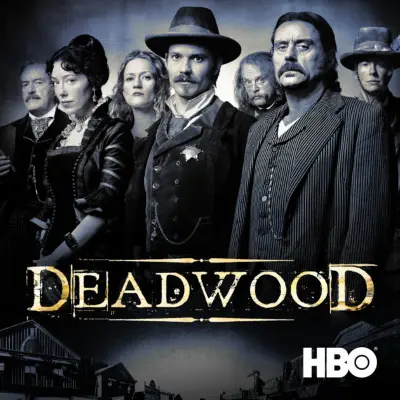Deadwood: The Movie highlighted the differences between TV and movie westerns
-

"Television westerns are all about the gap between one event and the next — and the random vagaries of life that get lived in the interval — while it's film westerns that tell the Big Stories about History, epics about Beginnings and Endings and Grand Historical Transitions (with plenty of capital letters), with ordinary people getting swept by the tides of modernity and progress," says Aaron Bady. He adds: "Deadwood was always a TV show. It had the perspective of a television set, claustrophobic and cramped, with never a vista or horizon in sight. (Indeed, in retrospect, it's shocking how rarely anything happened on the show that wasn't within earshot of the Gem, or within view of his rooftop balcony). The camera tended to shoot low to the horizon, giving you a generous view of muddy ground and crowded streets, with at most a little sun peaking in around the edges. Not many wagon trains, more close-quarter knifings than gunfights, little gold, fewer cattle, and no trace of mythology or romanticism. If it felt like something was missing from the Deadwood movie, then, it might be because it was doing film western, taking a big swing at big changes." ALSO: Costume designer Janie Bryant used an original 1880s dress in Deadwood: The Movie.
